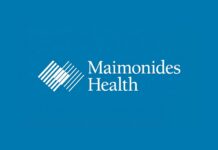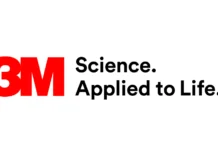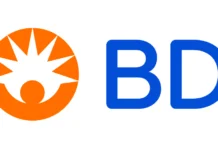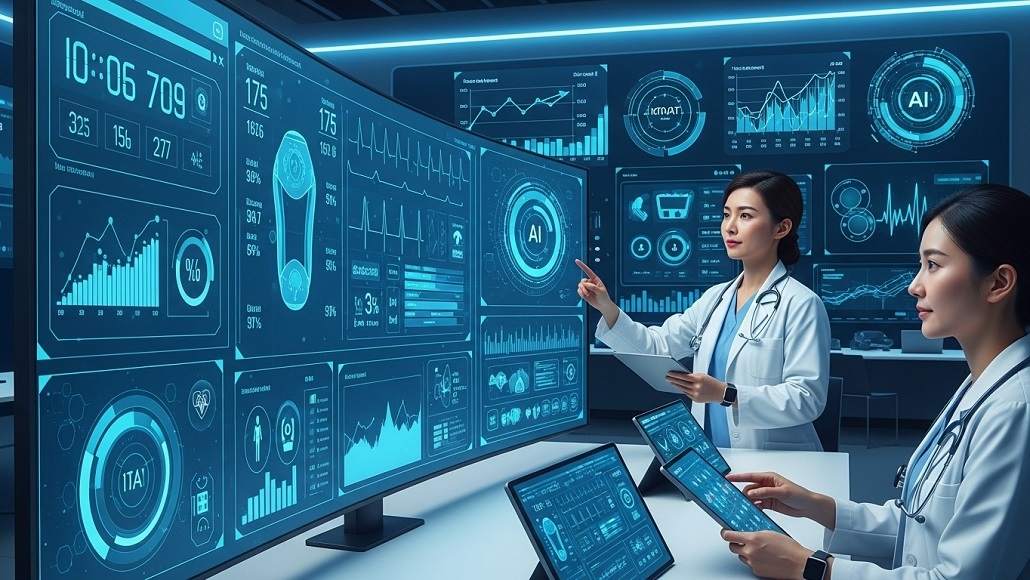Real-Time Health Monitoring System Market Size, Share, Trends, Analysis, and Forecast (2025-2034)
The healthcare industry is experiencing a significant transformation, propelled by innovative technologies and a growing emphasis on patient-centric care. Among these advancements, real-time health monitoring systems have emerged as pivotal tools that facilitate continuous observation of patients’ health parameters, enabling timely interventions and enhancing overall healthcare outcomes. This report explores the real-time health monitoring system market’s size, share, trends, analysis, and forecast for the period 2025 to 2034, shedding light on the dynamics that are shaping this rapidly evolving sector.
Market Overview
The global real-time health monitoring system market is poised for substantial growth over the next decade. Factors such as the increasing prevalence of chronic diseases, growing geriatric population, and rising healthcare expenditure are driving the demand for advanced health monitoring solutions. Furthermore, the integration of wearable technologies and the Internet of Things (IoT) into healthcare is revolutionizing patient monitoring, enabling healthcare providers to deliver more efficient and effective care.
According to industry estimates, the Global Real-Time Health Monitoring System Market Size is valued at USD 17.79 Billion in 2025. Worldwide sales of the Real-Time Health Monitoring System Market are expected to grow at a significant CAGR of 10.7%, reaching USD 36.26 Billion by the end of the forecast period in 2034. This growth trajectory reflects the burgeoning demand for continuous health monitoring solutions that enhance patient engagement and improve clinical outcomes.

Key Drivers of Market Growth
Several factors are driving the expansion of the real-time health monitoring system market:
1. Increasing Prevalence of Chronic Diseases
Chronic diseases such as diabetes, hypertension, and cardiovascular disorders are on the rise globally. According to the World Health Organization (WHO), chronic diseases account for 71% of all deaths worldwide. The need for continuous monitoring of patients with chronic conditions is becoming increasingly vital to prevent complications and readmissions. Real-time health monitoring systems enable healthcare providers to track patients’ vital signs, medication adherence, and lifestyle factors, facilitating proactive management of chronic ailments.
2. Technological Advancements
The rapid advancement of technology, particularly in wearable devices and IoT applications, is transforming the landscape of health monitoring. Wearable devices such as smartwatches, fitness trackers, and medical-grade sensors allow patients to monitor their health parameters in real time. These devices are equipped with advanced sensors that can measure heart rate, blood pressure, glucose levels, and more, providing healthcare professionals with valuable data for diagnostic and treatment purposes.
3. Focus on Patient-Centric Care
The healthcare industry is shifting towards a patient-centric approach, emphasizing personalized care and improved patient engagement. Real-time health monitoring systems empower patients to take an active role in managing their health. With access to real-time data, patients can make informed decisions, adhere to treatment plans, and communicate effectively with their healthcare providers. This shift towards patient empowerment is driving the adoption of health monitoring solutions across healthcare settings.
4. Rising Healthcare Expenditure
Increased healthcare spending is a significant driver of market growth. Governments and private sectors are investing in healthcare infrastructure and technology to improve service delivery and patient outcomes. The integration of real-time health monitoring systems into healthcare facilities is recognized as a means to enhance efficiency, reduce costs associated with hospitalizations, and improve overall patient satisfaction.
Competitive Landscape
The competitive landscape of the real-time health monitoring system market is characterized by the presence of several key players that are actively engaged in developing innovative solutions. Companies such as Philips Healthcare, GE Healthcare, Medtronic, Siemens Healthineers, and Fitbit are at the forefront of this market, continuously enhancing their product offerings to meet the evolving needs of healthcare providers and patients.
Trends Shaping the Market
Several trends are influencing the trajectory of the real-time health monitoring system market:
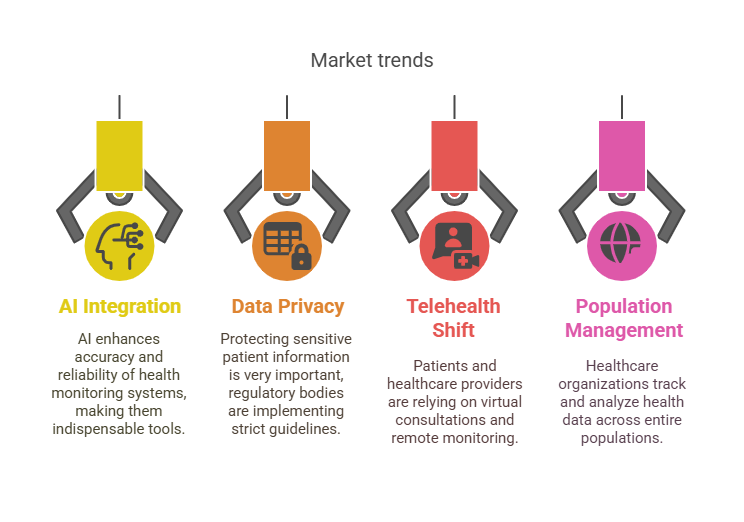
1. Integration of Artificial Intelligence
Artificial intelligence (AI) is playing a transformative role in health monitoring systems. AI algorithms analyze vast amounts of patient data to identify patterns, predict potential health issues, and facilitate early interventions. The incorporation of AI enhances the accuracy and reliability of health monitoring systems, making them indispensable tools for healthcare providers.
2. Emphasis on Data Privacy and Security
As the adoption of real-time health monitoring systems increases, so does the importance of data privacy and security. Stakeholders in the healthcare industry are increasingly aware of the need to protect sensitive patient information. Regulatory bodies are implementing strict guidelines and compliance measures to ensure data security in health monitoring applications.
3. Shift Towards Telehealth
The COVID-19 pandemic accelerated the adoption of telehealth services, highlighting the need for real-time health monitoring solutions. Patients and healthcare providers are increasingly relying on virtual consultations and remote monitoring to ensure continuity of care. This trend is expected to persist, driving the demand for integrated health monitoring systems that support telehealth initiatives.
4. Population Health Management
Real-time health monitoring systems are integral to population health management strategies, enabling healthcare organizations to track and analyze health data across entire populations. By identifying trends and risk factors, healthcare providers can implement targeted interventions to improve health outcomes and reduce healthcare costs.
Challenges in the Market
Despite the promising growth prospects, the real-time health monitoring system market faces several challenges:
1. High Implementation Costs
The initial costs associated with implementing real-time health monitoring systems can be significant, particularly for smaller healthcare facilities. These costs may include the purchase of hardware, software, and ongoing maintenance and support. As a result, budget constraints may hinder the adoption of health monitoring solutions in certain settings.
2. Integration with Existing Systems
Integrating new health monitoring technologies with existing healthcare systems poses technical challenges. Compatibility issues and the need for extensive training can slow down the adoption process. Healthcare organizations must invest time and resources in ensuring seamless integration to maximize the benefits of real-time monitoring.
3. Regulatory Compliance
The healthcare industry is heavily regulated, and compliance with data protection laws and healthcare regulations is essential. Navigating the complex regulatory landscape can be daunting for organizations seeking to implement real-time health monitoring systems. Ensuring compliance while leveraging innovative technologies requires careful planning and strategy.
Future Outlook and Opportunities
The future of the real-time health monitoring system market appears bright, with numerous opportunities for growth and innovation. The increasing prevalence of chronic diseases, advancements in technology, and the ongoing shift toward patient-centric care are likely to drive demand for health monitoring solutions over the coming years.
Potential Opportunities
- Expansion into Emerging Markets: As healthcare infrastructure improves in emerging markets, there is significant potential for the adoption of real-time health monitoring systems. Tailoring solutions to meet the specific needs of these markets can lead to substantial growth opportunities.
- Development of Customized Solutions: There is an emerging demand for personalized health monitoring solutions that cater to individual patient needs. Companies that can develop customizable health monitoring systems are likely to gain a competitive advantage.
- Collaboration with Healthcare Providers: Strategic partnerships between technology providers and healthcare organizations can accelerate the development and implementation of innovative health monitoring solutions. Collaborations can enhance the effectiveness of real-time monitoring systems and drive better patient outcomes.
- Focus on Preventive Care: The emphasis on preventive care will continue to grow, with real-time health monitoring systems playing a crucial role in early detection and intervention. Solutions that facilitate preventive care will attract attention from healthcare providers and payers alike.
Conclusion
The real-time health monitoring system market is poised for significant growth, driven by technological advancements, increasing demand for patient-centric care, and a focus on improving health outcomes. As stakeholders in the healthcare ecosystem work together to address the challenges and opportunities presented by this evolving landscape, real-time health monitoring systems will play a crucial role in transforming healthcare delivery.
The commitment to leveraging technology for enhanced patient engagement, improved clinical outcomes, and reduced healthcare costs underscores the importance of real-time health monitoring systems in the future of healthcare. As the market evolves, stakeholders must embrace innovation and collaboration to unlock the full potential of these transformative solutions, ultimately ensuring that patients receive the highest quality of care




